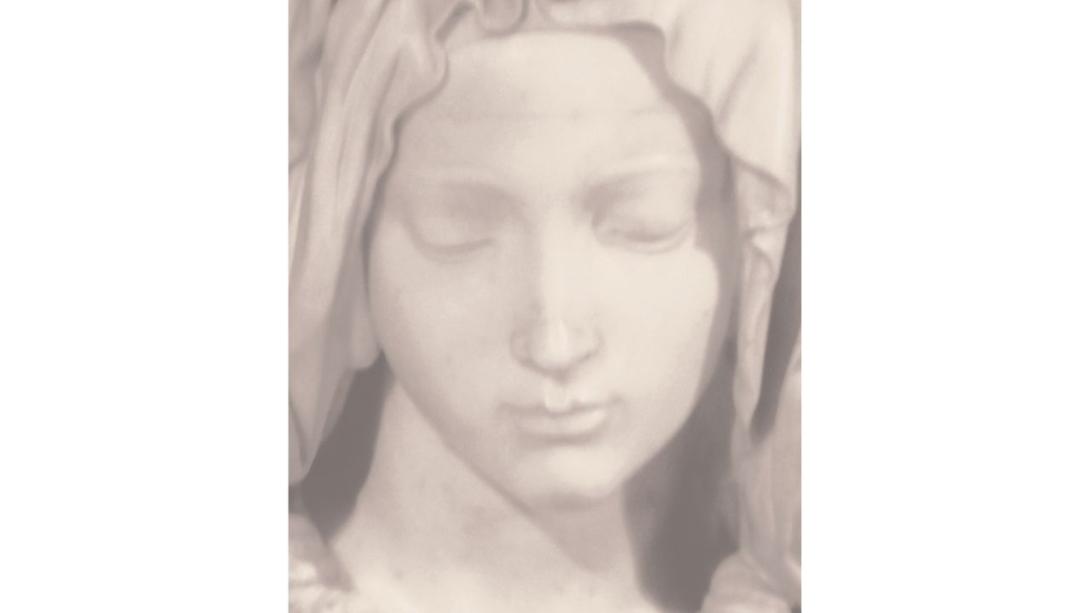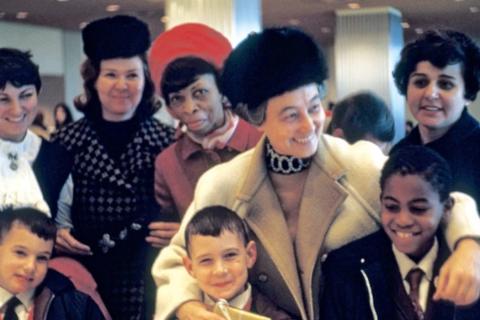A work in the Church named after Mary
Acknowledgements and awards, the birth of the Movement for Unity in Politics, the Marian profile of the Church
Chiara Lubich was founder and first president of the Focolare Movement, and a prolific writer.
We continue to celebrate the centennial of her birth (1920) by covering key moments in her life.
Part 18: 1994–1996

Photo by Leandro De Leon
Chiara Lubich returned to public life in January 1994, after a two-year pause due to spiritual and physical reasons, with a worldwide conference call entitled “Dwell in joy.” It was a personal and collective invitation that described a change taking place, a new step being taken to walk together after a long period of silence. A flood of recognitions, awards and commitments were about to follow.
In 1995, on January 1, the World Day of Peace, Chiara was invited to Trent to offer an address entitled “Women: Teachers of Peace.” She highlighted some of the characteristics of the female identity
—including concreteness and sacrifice—and she affirmed that women can find their fulfillment in Christ and their model in Mary.
Then, during the last week of February, she travelled to Istanbul to meet with the Ecumenical Patriarch Bartholomew I, who presented her with the Byzantine Cross in recognition of her work in the field of ecumenical dialogue. It had begun decades earlier with Patriarch Athenagoras and continued with Patriarch Demetrius.
In March the Author of the Year Award from the Catholic Publishers and Booksellers Union (UELCI) was unexpectedly given to her, a fact which gave her particular joy.
“I have never written a book,” Chiara said, expressing her surprise, “even if many of them bear my name as the author.” And yet the recognition had solid motivation considering the ample production and dissemination of her writings translated and published in 30 languages and countless editions. Her book “Meditations,” for example, is in its 29th edition.
Still in 1995, Chiara was granted honorary citizenship in Rocca di Papa, Rome. In her acceptance speech on April 8 she retraced the steps of the birth of the headquarters of the Focolare, which is situated in this beautiful town, part of Castelli Romani just outside Rome, and is “now known everywhere because of the expansion of the movement throughout the world.”
Later that year, in recognition of the work for interreligious dialogue, there was a symbolic step: a trip to Jerusalem and the subsequent planting of an olive tree in front of the movement’s headquarters. It was offered to Chiara by representatives of the Focolare community and the Jewish community “for her commitment to interreligious peace between Jews and Christians.”
1996 was also a year marked by significant events: among the many Chiara was granted honorary citizenship of the city of Pompeii, a place where Mary is honored in a special way. It gave Chiara the opportunity to speak of her Marian charism, of the new understanding of Mary, honored and imitated as a role model.
On May 2, a historic foundation took place in Naples: the birth of the Movement for Unity in Politics, which in the following years would go on to develop internationally and involve politicians of different political orientations committed to living for the common good, united by values such as peace, social justice, solidarity, ecology, the value of life.
In June, the first of 16 honorary doctorates was conferred on Chiara by the University of Lublin in Poland: a doctorate in social sciences. Unexpectedly, since one would have thought that a degree in Theology (which instead came next, in Manila) would have come first. But the motivations expressed by Professor Adam Biela in the laudatio clarify the choice: “Chiara created a new social phenomenon which could be at the basis of social sciences and could be seen as a Copernican revolution in these sciences.” Chiara accepted the title as recognition of a charism suited to the times.
During a trip to Great Britain in November, the primate of the Church of England, Dr. George Carey, offered Chiara the highest award in the Anglican Church, the golden cross of Saint Augustine of Canterbury, thanking her for all she was doing for the church and for the world.
The year drew to a close with Chiara being conferred the UNESCO Prize for Peace Education, for having “contributed to a constructive dialogue among peoples of different cultural origins and religious confessions.”
The many acknowledgements received during her lifetime and beyond bear witness to the magnitude of a lay and Marian charism.
Chiara frequently attributed the birth of the movement to Our Lady, naming it after her: the Work of Mary.
Mary in fact occupies a primary role in the Focolare. The most important commitment of its members, expressed in the statutes (art 2), is to relive her, “to be a presence of Mary on earth, almost a continuation of her.” Mary is the model of what each person is called to be, and all in turn can repeat her in their own lives.
The presence of Mary was evident from the movement’s beginnings, but in 1949 Chiara had special insight into Mary’s constant, active, total adherence to God’s word, which caused her to be fully ‘Word of God,’ all clothed by in Word of God, by a greatness that Chiara compared to an immense blue sky that contains the sun.
Using another poetic expression, Chiara described Mary as the “flower of humanity” because she fulfills in herself the plan of love that God had for the entire creation since the very beginning. Her particular call to participate in the divine life becomes the image and the model of an extended call to humanity. For this reason, one could say that in Mary, all of humanity blossoms, and in her, all of creation blooms and speaks of beauty.
The culminating moment of Mary’s life is marked by her desolation at the foot of the cross, when she offers up Jesus and becomes the mother of all.
In that moment her divine maternity becomes an explicit expression of her ecclesial maternity, becoming the model of the royal priesthood that is extended to all the faithful.
Remaining then in the Cenacle with the Apostles, awaiting the coming of the Holy Spirit, “Mary,” Chiara wrote in 1949, “does not ‘follow’ Jesus anymore. Now she is in a certain way transformed into him (see Gal 2:20), and she too contributes, in her own way, to the expansion of the Church.”
In that circumstance you can recognize the birth of the “Marian profile” that is extended to the entire Church, and which explains how the Marian dimension precedes the Petrine one, both in the plan of God and in time (see the Address of John Paul II to the Roman Curia, December 22, 1987).
Understood anew, the figure of Mary can be a source of reflection in ecclesial life. As the first lay person of the Church, she is the model of the vocation to sanctity that everyone is called to. It is a lifestyle for ecclesial movements, a route to ecumenism and interreligious dialogue.
A Marian church could be, as Chiara hoped, more beautiful, holy, dynamic, familiar, loving, welcoming.
To imitate her
Mary, after God, is everything for me, and for us. Because of a special charism, in fact, which we can describe as a Marian one… we had a profound and, in a certain sense, new understanding of the Holy Virgin, of the Mother of God. She is at the center of our thoughts, life, affections and our studies.
We seek to honor her not only in her extraordinary privileges — the Immaculate Conception, the Assumption, Mary Queen of the World — to pray to her saying the rosary and visiting her shrines. But we also strive, with the help of God, to imitate her in the different stages of her life, according to our condition and age, as a little girl, completely turned toward God, as a young woman, engaged or married, consecrated or widow.
We entrust ourselves to her and hope that what saintly followers devoted to her have said might come true for us too: that there may be a special presence of Mary in our soul, so that all that we do may be, in some way, her work.
Chiara Lubich, Honorary Citizenship Conferral in Pompeii, April 30, 1996












